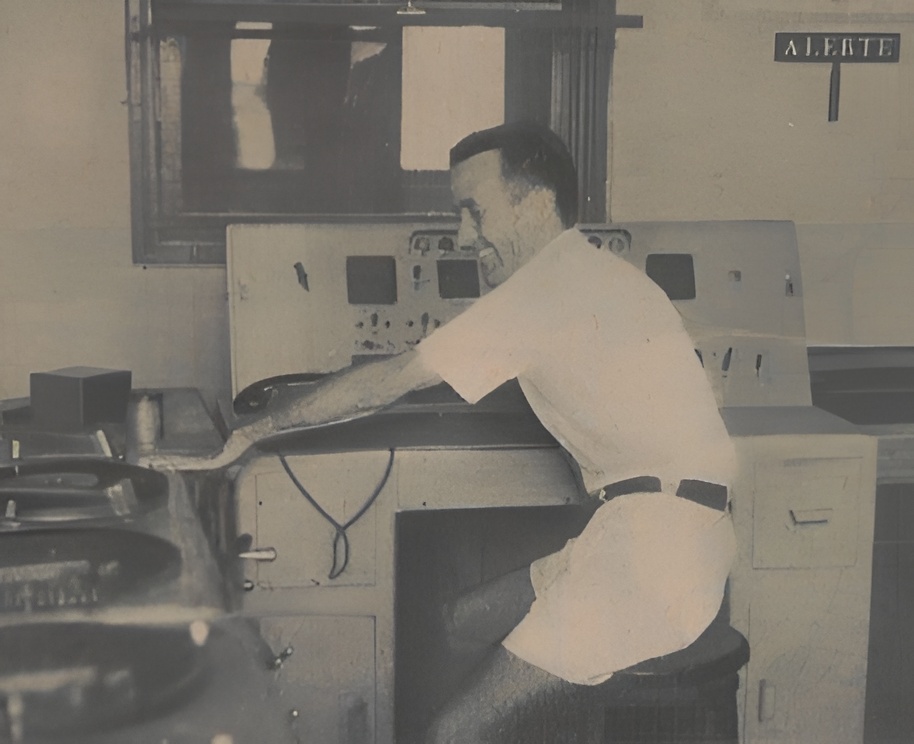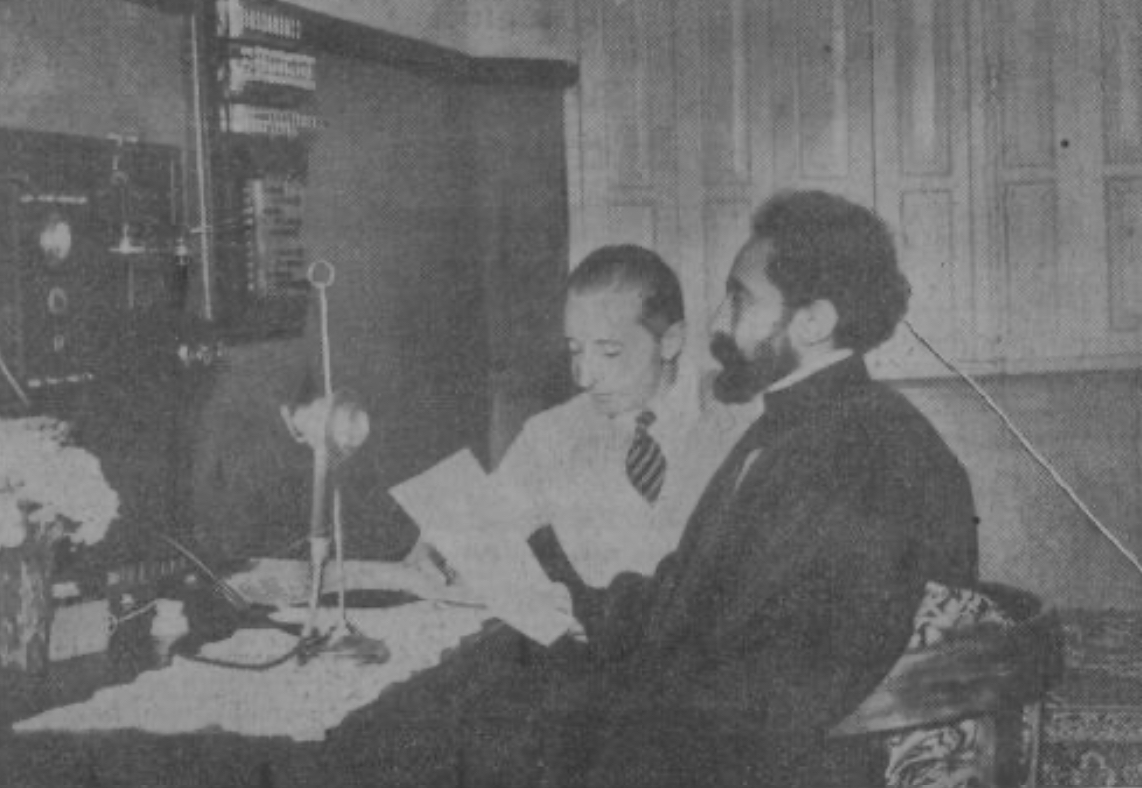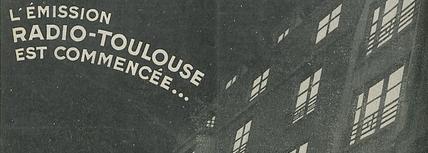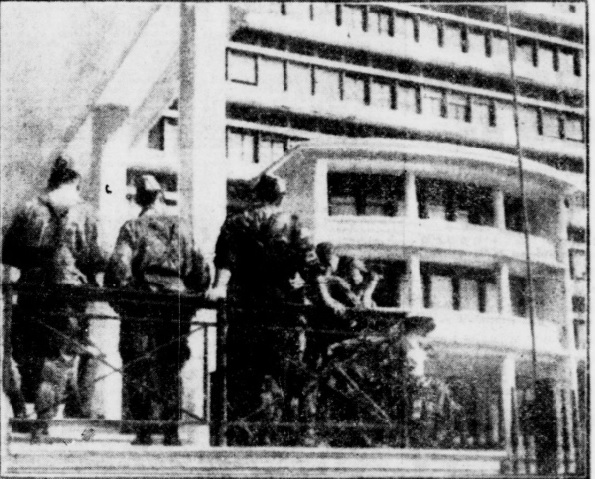En septembre et octobre 1945, l’Indochine est dans une situation de grande instabilité. Après le coup de force japonais de mars, l’administration coloniale française a été démantelée et, à la capitulation du Japon en août, un vide de pouvoir s’installe. Profitant de ce contexte, le Viêt Minh dirigé par Hô Chi Minh prend le contrôle de nombreuses villes et proclame, le 2 septembre à Hanoï, l’indépendance de la République démocratique du Viêt Nam.
Conformément aux accords de Potsdam, le pays est temporairement divisé : au nord du 16ᵉ parallèle, les troupes nationalistes chinoises désarment les Japonais, tandis qu’au sud ce sont les Britanniques qui occupent la région. Dans le même temps, la France organise le retour de ses troupes, sous le commandement du général Leclerc, afin de restaurer son autorité coloniale.
Cette période est marquée par de fortes tensions : affrontements entre Viêt Minh, autres mouvements nationalistes, forces japonaises encore présentes et alliés, violences dans les villes, et réinstallation progressive de l’administration française, surtout en Cochinchine. Ces événements annoncent l’affrontement inévitable entre la volonté d’indépendance vietnamienne et la volonté française de rétablir son empire, prélude à la guerre d’Indochine qui éclatera l’année suivante.
Un retour sur les ondes sous contrôle britannique
C’est dans ce contexte très troublé que Radio Saigon revient sur les ondes le 1er octobre, quelques jours avant l’arrivée du général Leclerc et du corps expéditionnaire français.
Pour les colons français, il y a urgence. En août, le Viet Minh a pris le contrôle de la station de TSF de Bach Mai près d’Hanoi (Nord Vietnam). Le 7 septembre, Radio Bach Mai – La Voix du Vietnam est sur les ondes pour diffuser la proclamation de l’indépendance de la République Démocratique du Vietnam.
Au sud, Radio Saigon a continué fin août à être sous contrôle japonais. Mais en septembre, elle diffuse sur ondes courtes des nouvelles des prisonniers de guerre libérés par les Britanniques et notamment ceux originaires d’Australie et de Nouvelle-Zélande. Radio Saigon reste sous le contrôle des autorités militaires britanniques.
Radio Saigon reprend ses programmes réguliers sous le contrôle des autorités militaires britanniques. Elle diffuse le programme suivant sur 29,62 m et 285 m (1050 kc) de longueur d’onde . (Les horaires sont en GMT+8)
Le matin
11h30. Disques.
11h48. Informations en vietnamien.
12h00. Informations en français.
12h15. Informations en anglais,
12h30. Disques.
12h45. Fin de l’émission,
L’après-midi
15h00. Disques.
18h00. Informations en français.
18h15. Disques.
18h30. Informations en anglais.
18h45. Disques.
19h00. Information en vietnamien.
19h15. Disques.
20h00. Information en français.
20h15. Disques.
21h00. Fin des émissions.
Quelques jours après la reprise en mains des émissions, Radio Saigon échappe au pire. Le 15, les indépendantistes vietnamiens mettent le feu à des bâtiments adjacents à la station à l’occasion de troubles qui se poursuivent dans la capitale de la Cochinchine.
Dans le courant de l’automne des émissions de variétés en anglais sont diffusées en soirée pour les troupes britanniques.
La France reprend le contrôle de Radio Saigon
Le dimanche 9 décembre 1943, Radio Saigon, la voix de la France en Extrême-Orient, passe sous le contrôle des autorités françaises. Voici le programme de cette journée:
7h30. Informations en français.
10h. Radio reportage, depuis l’hôtel de ville de Saigon, de la visite officielle de l’Amiral Thierry d’Argenlieu, Haut Commissaire de France pour l’Indochine.
11h00. Journal.
11h15. Messages familiaux.
11h30. Musique de danse.
12h00. Informations en français et dépêche de Louis Vaucelle.
12h15. Chronique locale.
12h45. Musique de danse.
13h15. Messages familiaux.
17h00. Journal
17h15. Chansons de charme.
17h30. Musique de danse.
17h45. La Semaine Internationale de Pierre About.
18h00. Information en français et dépêche de Louis Vaucelle.
19h45. Caravelle vous parle (pour les militaires).
20h00. Informations en français.
20h15. La Semaine Internationale, de Pierre About.
20h30. Variétés.
Le retour des émissions en chinois
En février 1946, les émissions en chinois font leur retour.
Le matin, de 11h à 11h15, la revue de la presse locale du matin et informations de la matinée. De 11h15 à 11h30, le quart d’heure de musique enregistrée chinoise. L’après midi, de 16h à 16h15, dernières informations de la journée. De 16h15 à 16h30, le quart d’heure de musique enregistrée chinoise.
Et voilà, tout semblait bien reparti quand soudain :
October 1945: Radio Saigon Resumes Regular Programming Amid Chaos
In September and October 1945, Indochina was in a state of great instability. After the Japanese coup in March, the French colonial administration had been dismantled, and following Japan’s capitulation in August, a power vacuum emerged. Taking advantage of this situation, the Viet Minh led by Ho Chi Minh seized control of many cities and, on September 2 in Hanoi, proclaimed the independence of the Democratic Republic of Vietnam.
According to the Potsdam agreements, the country was temporarily divided: north of the 16th parallel, Chinese nationalist troops disarmed the Japanese, while in the south the British occupied the region. At the same time, France was organizing the return of its troops under General Leclerc in order to restore its colonial authority.
This period was marked by strong tensions: clashes between the Viet Minh, other nationalist movements, Japanese forces still present, and the Allies; violence in the cities; and the gradual reestablishment of French administration, especially in Cochinchina. These events foreshadowed the inevitable confrontation between Vietnamese aspirations for independence and France’s determination to reassert its empire—leading to the First Indochina War, which would break out the
A Return to the Airwaves Under British Control
It was in this troubled context that Radio Saigon returned to the airwaves on October 1, just days before the arrival of General Leclerc and the French Expeditionary Corps.
For the French colonists, the situation was urgent. In August, the Viet Minh had seized control of the radio transmitter at Bach Mai near Hanoi (North Vietnam). On September 7, Radio Bach Mai – The Voice of Vietnam went on the air to broadcast the proclamation of the independence of the Democratic Republic of Vietnam.
In the south, Radio Saigon remained under Japanese control until late August. In September, however, it began broadcasting on shortwave with news about prisoners of war freed by the British, particularly those from Australia and New Zealand. Radio Saigon thus remained under the control of British military authorities.
Radio Saigon resumed its regular programming under British military supervision. It broadcast the following schedule on 29.62 m and 285 m (1050 kc) wavelengths (all times GMT+8):
Morning
11:30 – Records
11:48 – News in Vietnamese
12:00 – News in French
12:15 – News in English
12:30 – Records
12:45 – End of broadcast
Afternoon
15:00 – Records
18:00 – News in French
18:15 – Records
18:30 – News in English
18:45 – Records
19:00 – News in Vietnamese
19:15 – Records
20:00 – News in French
20:15 – Records
21:00 – End of broadcasts
A few days after broadcasts resumed, Radio Saigon narrowly avoided disaster. On the 15th, Vietnamese nationalists set fire to buildings adjacent to the station during unrest that continued in the capital of Cochinchina.
During the autumn, variety programs in English were broadcast in the evenings for British troops.
France Regains Control of Radio Saigon
On Sunday, December 9, 1945, Radio Saigon, the voice of France in the Far East, was placed back under French authority. Here was that day’s schedule:
7:30 – News in French
10:00 – Radio report, live from Saigon City Hall, covering the official visit of Admiral Thierry d’Argenlieu, High Commissioner of France for Indochina
11:00 – News bulletin
11:15 – Family messages
11:30 – Dance music
12:00 – News in French and a dispatch from Louis Vaucelle
12:15 – Local column
12:45 – Dance music
13:15 – Family messages
17:00 – News bulletin
17:15 – Popular songs
17:30 – Dance music
17:45 – La Semaine Internationale by Pierre About
18:00 – News in French and a dispatch from Louis Vaucelle
19:45 – Caravelle vous parle (for the military)
20:00 – News in French
20:15 – La Semaine Internationale by Pierre About
20:30 – Variety show
The Return of Chinese-Language Broadcasts
In February 1946, Chinese-language broadcasts returned.
In the morning, from 11:00 to 11:15, the local morning press review and news of the day; from 11:15 to 11:30, a quarter-hour of recorded Chinese music. In the afternoon, from 16:00 to 16:15, the day’s final news; from 16:15 to 16:30, a quarter-hour of recorded Chinese music.
Tháng 10 năm 1945: Đài Phát thanh Sài Gòn phát sóng trở lại giữa lúc hỗn loạn
Trong tháng 9 và tháng 10 năm 1945, tình hình Đông Dương rơi vào trạng thái bất ổn nghiêm trọng. Sau cuộc đảo chính của Nhật vào tháng 3, bộ máy hành chính thuộc địa của Pháp bị giải thể. Khi Nhật Bản đầu hàng vào tháng 8, một khoảng trống quyền lực đã xuất hiện. Tận dụng bối cảnh đó, Việt Minh do Hồ Chí Minh lãnh đạo đã kiểm soát nhiều thành phố và ngày 2 tháng 9 tại Hà Nội, tuyên bố độc lập thành lập nước Việt Nam Dân chủ Cộng hòa.
Theo thỏa thuận Potsdam, đất nước tạm thời bị chia đôi: phía bắc vĩ tuyến 16, quân đội Trung Hoa Quốc dân đảng tước khí giới của quân Nhật, trong khi ở phía nam, quân Anh chiếm đóng khu vực. Đồng thời, Pháp tổ chức đưa quân trở lại dưới sự chỉ huy của tướng Leclerc, nhằm khôi phục quyền lực thuộc địa.
Giai đoạn này đầy căng thẳng: các cuộc đụng độ giữa Việt Minh, các phong trào dân tộc khác, lực lượng Nhật còn hiện diện và quân Đồng minh; bạo loạn tại các thành phố; cùng với sự khôi phục dần dần bộ máy hành chính Pháp, đặc biệt ở Nam Kỳ. Những biến động đó báo hiệu cuộc đối đầu tất yếu giữa khát vọng độc lập của người Việt Nam và ý đồ tái lập đế chế của Pháp – mở đầu cho Chiến tranh Đông Dương bùng nổ vào năm sau.
Trở lại làn sóng dưới sự kiểm soát của Anh
Trong bối cảnh rối ren đó, Đài Phát thanh Sài Gòn phát sóng trở lại ngày 1 tháng 10, chỉ vài ngày trước khi tướng Leclerc và quân viễn chinh Pháp đặt chân đến.
Đối với người Pháp ở thuộc địa, tình hình vô cùng cấp bách. Tháng 8, Việt Minh chiếm đài phát sóng Bạch Mai gần Hà Nội. Ngày 7 tháng 9, Đài Phát thanh Bạch Mai – Tiếng nói Việt Nam lên sóng để phát đi Tuyên ngôn Độc lập của nước Việt Nam Dân chủ Cộng hòa.
Ở miền Nam, đến cuối tháng 8, Đài Phát thanh Sài Gòn vẫn nằm trong tay Nhật. Nhưng sang tháng 9, đài này đã phát sóng trên sóng ngắn tin tức về tù binh chiến tranh được quân Anh trả tự do, trong đó có nhiều người đến từ Úc và New Zealand. Từ đó, Đài Sài Gòn nằm dưới quyền kiểm soát của quân đội Anh.
Đài Phát thanh Sài Gòn nối lại chương trình thường nhật dưới sự giám sát của quân đội Anh. Đài phát sóng theo lịch sau trên làn sóng 29,62 m và 285 m (1050 kc). (Giờ GMT+8)
Buổi sáng
11h30 – Đĩa nhạc
11h48 – Tin tức tiếng Việt
12h00 – Tin tức tiếng Pháp
12h15 – Tin tức tiếng Anh
12h30 – Đĩa nhạc
12h45 – Kết thúc chương trình
Buổi chiều – tối
15h00 – Đĩa nhạc
18h00 – Tin tức tiếng Pháp
18h15 – Đĩa nhạc
18h30 – Tin tức tiếng Anh
18h45 – Đĩa nhạc
19h00 – Tin tức tiếng Việt
19h15 – Đĩa nhạc
20h00 – Tin tức tiếng Pháp
20h15 – Đĩa nhạc
21h00 – Kết thúc phát sóng
Chỉ vài ngày sau khi trở lại sóng, Đài Sài Gòn thoát hiểm trong gang tấc. Ngày 15, các lực lượng dân tộc Việt Nam phóng hỏa các tòa nhà cạnh đài trong lúc bạo loạn tiếp diễn tại thủ phủ Nam Kỳ.
Vào cuối mùa thu, những chương trình ca nhạc giải trí bằng tiếng Anh được phát buổi tối để phục vụ binh lính Anh.
Pháp giành lại quyền kiểm soát Đài Sài Gòn
Ngày Chủ nhật 9 tháng 12 năm 1945, Đài Phát thanh Sài Gòn – tiếng nói của nước Pháp tại Viễn Đông – chính thức trở lại dưới quyền kiểm soát của chính quyền Pháp. Đây là lịch phát sóng hôm đó:
7h30 – Tin tức tiếng Pháp
10h00 – Tường thuật trực tiếp từ Tòa Đô chính Sài Gòn: chuyến thăm chính thức của Đô đốc Thierry d’Argenlieu, Cao ủy Pháp tại Đông Dương
11h00 – Bản tin
11h15 – Thông điệp gia đình
11h30 – Nhạc khiêu vũ
12h00 – Tin tức tiếng Pháp và bản tin của Louis Vaucelle
12h15 – Chuyên mục địa phương
12h45 – Nhạc khiêu vũ
13h15 – Thông điệp gia đình
17h00 – Bản tin
17h15 – Ca khúc trữ tình
17h30 – Nhạc khiêu vũ
17h45 – Tuần lễ quốc tế của Pierre About
18h00 – Tin tức tiếng Pháp và bản tin của Louis Vaucelle
19h45 – Caravelle lên tiếng (dành cho quân đội)
20h00 – Tin tức tiếng Pháp
20h15 – Tuần lễ quốc tế của Pierre About
20h30 – Ca nhạc tạp kỹ
Chương trình phát sóng bằng tiếng Hoa trở lại
Đến tháng 2 năm 1946, chương trình phát bằng tiếng Hoa được nối lại.
Buổi sáng, từ 11h00 đến 11h15: điểm báo địa phương buổi sáng và tin tức trong ngày; từ 11h15 đến 11h30: 15 phút nhạc Hoa thu âm. Buổi chiều, từ 16h00 đến 16h15: tin tức cuối ngày; từ 16h15 đến 16h30: 15 phút nhạc Hoa thu âm.





